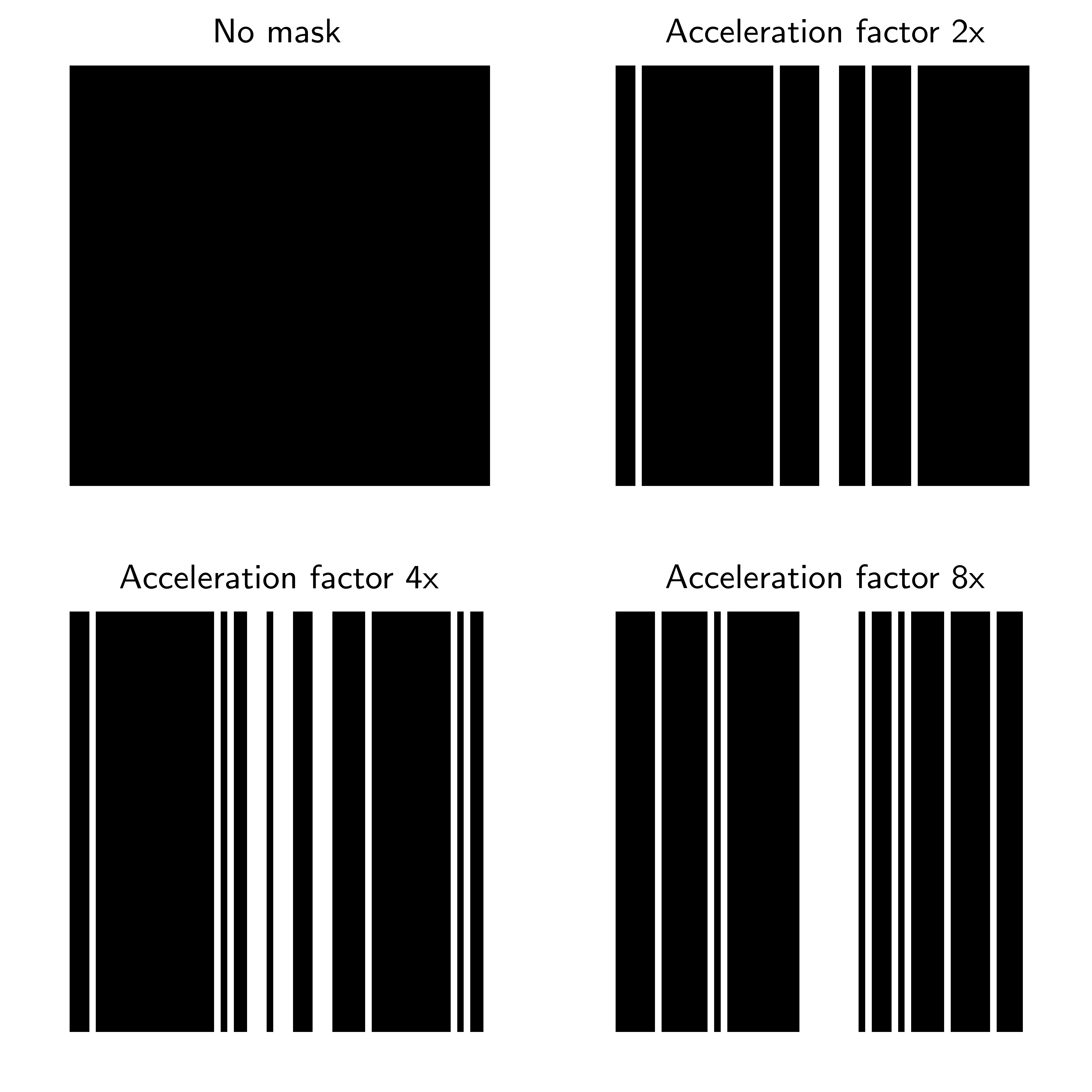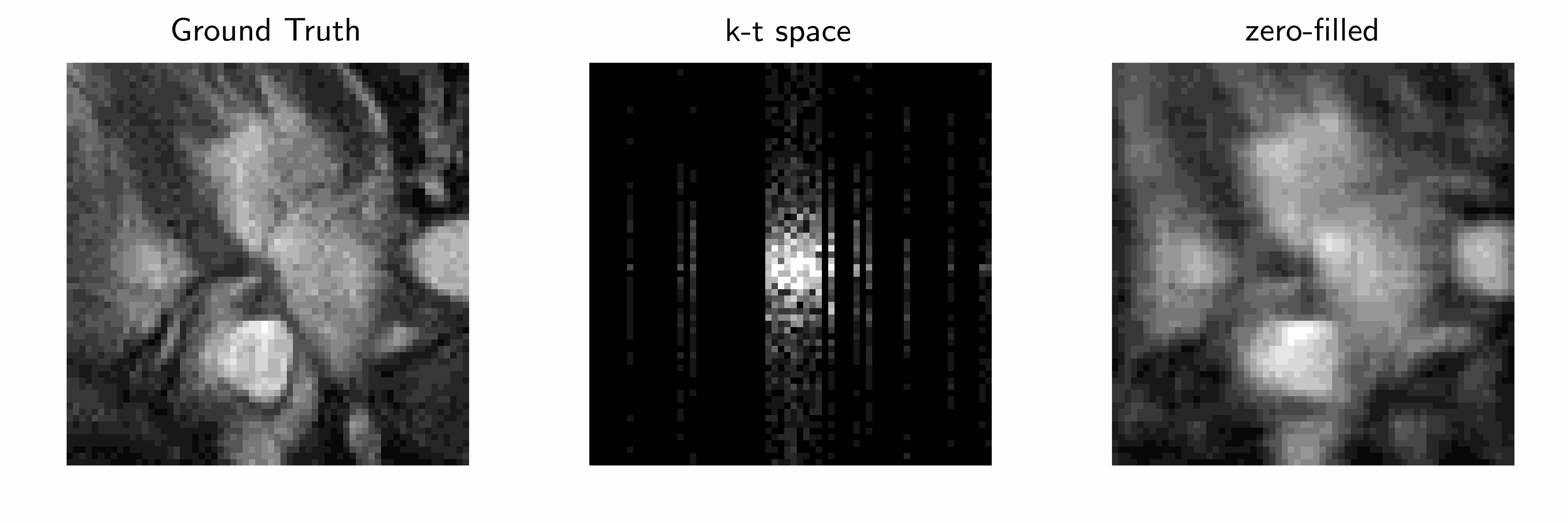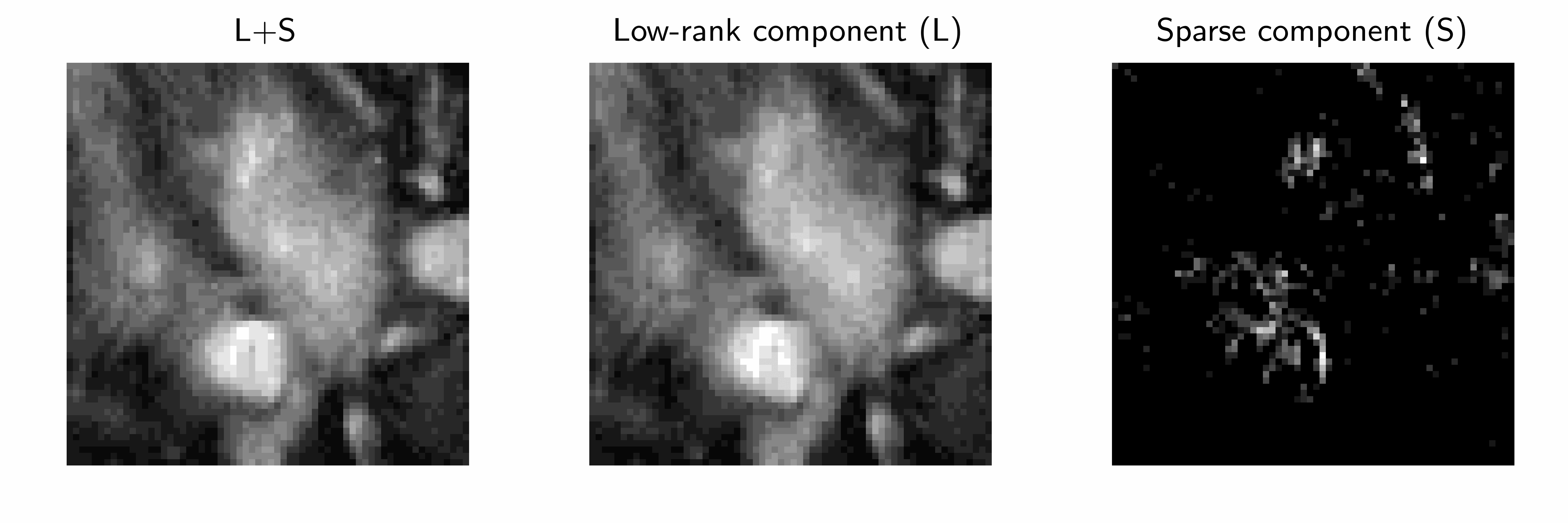Plug-and-play infimal convolution for dynamic MRI
By Amin Sabir
Supervisors: Yury Korolev, Matthias Ehrhardt

Aim: reconstruct dynamic MRI videos from accelerated undersampled measurements \(\mathbf{y}=\mathbf{Ax}\) where \(\mathbf{A}\) is an undersampled Fourier operator.
Applications: real-time cardiac imaging, free-breathing motion
Our method: we proposed a proximal gradient descent (PGD) method based on Plug-and-play (PnP) regularisation with infimial convolution (IC). We call it PnP-IC-PGD.
Contents:- Setup and sampling masks - (Poster figure 1)
- Classical infimal convolution example Low-rank + Sparsity (L+S) - (Poster figure 2)
Dynamic MRI inverse Problem setup
Selection of Gaussian sampling masks to choose from 1x - fully sampled, 2x (50% sampled), 4x (25% sampled), 8x (12.5% sampled). Note black indicates the samples, white corresponds to the missed readings across the scan.

We use the Gaussian mask with acceleration factor 8x on a real-world cardiac 2D+t dataset from the 2023 CMRxRecon challenge. This dataset has fully-sampled cine measurements which we use as the ground truth for evaluation.
Below we see the effect of the sampling mask on the ground truth, correpsonding k-t space and naive zero-filled estimate:
Poster figure 1:
L+S
Classical method of of Low-rank + Sparsity (L+S) [ Otazo, 2015 ], with the individual L and S components:
